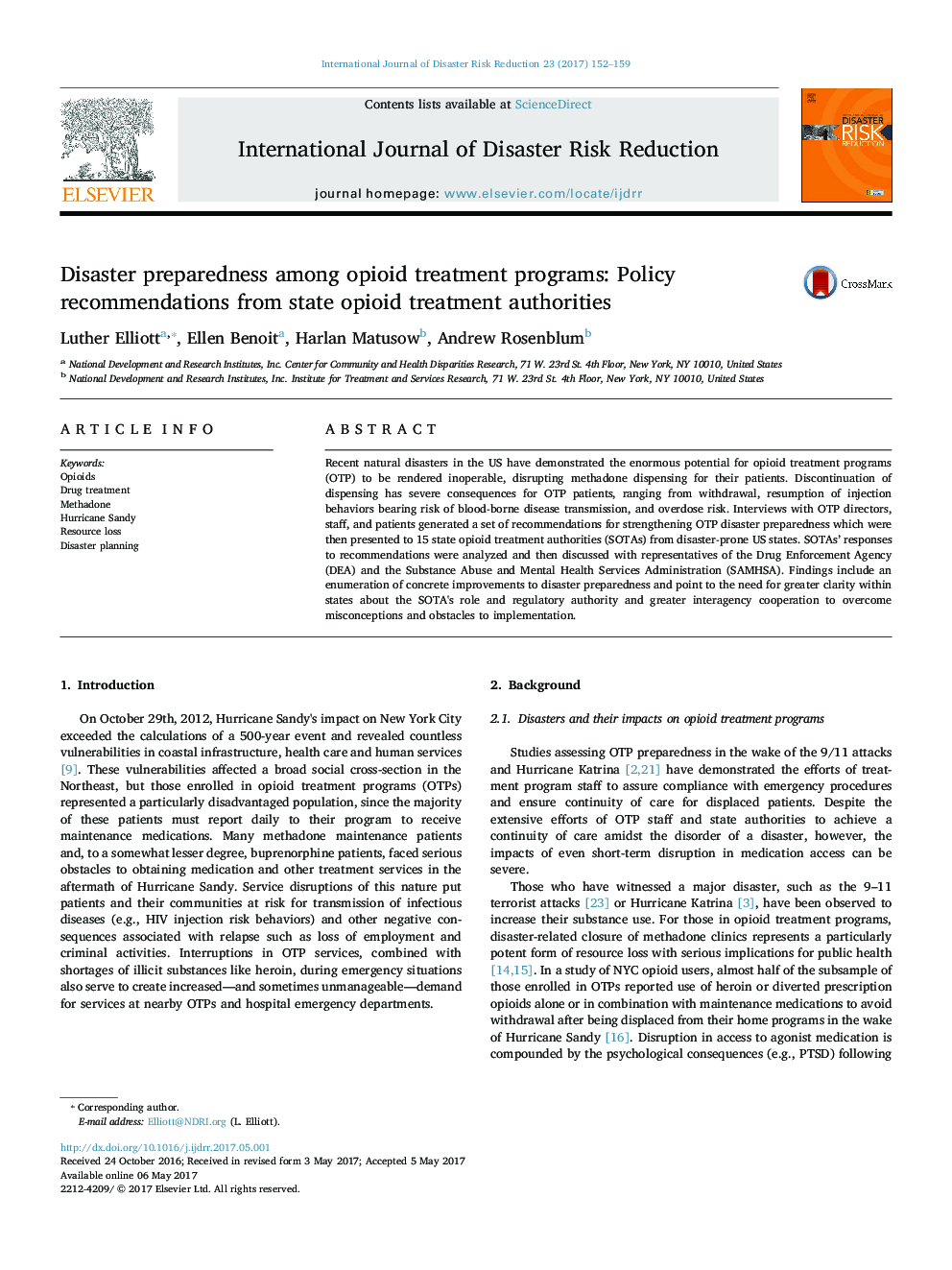| Article ID | Journal | Published Year | Pages | File Type |
|---|---|---|---|---|
| 5116129 | International Journal of Disaster Risk Reduction | 2017 | 8 Pages |
Abstract
Recent natural disasters in the US have demonstrated the enormous potential for opioid treatment programs (OTP) to be rendered inoperable, disrupting methadone dispensing for their patients. Discontinuation of dispensing has severe consequences for OTP patients, ranging from withdrawal, resumption of injection behaviors bearing risk of blood-borne disease transmission, and overdose risk. Interviews with OTP directors, staff, and patients generated a set of recommendations for strengthening OTP disaster preparedness which were then presented to 15 state opioid treatment authorities (SOTAs) from disaster-prone US states. SOTAs' responses to recommendations were analyzed and then discussed with representatives of the Drug Enforcement Agency (DEA) and the Substance Abuse and Mental Health Services Administration (SAMHSA). Findings include an enumeration of concrete improvements to disaster preparedness and point to the need for greater clarity within states about the SOTA's role and regulatory authority and greater interagency cooperation to overcome misconceptions and obstacles to implementation.
Related Topics
Physical Sciences and Engineering
Earth and Planetary Sciences
Geophysics
Authors
Luther Elliott, Ellen Benoit, Harlan Matusow, Andrew Rosenblum,
